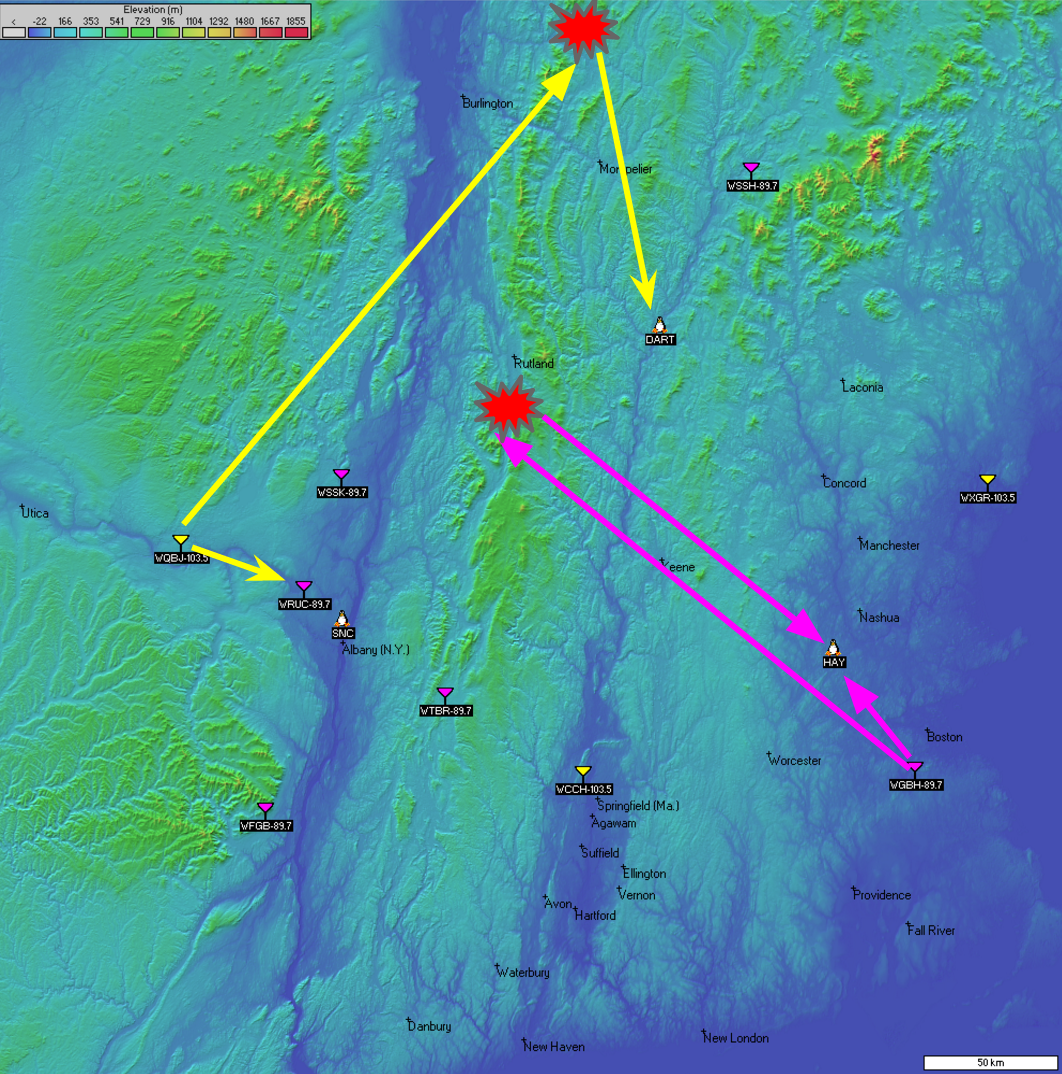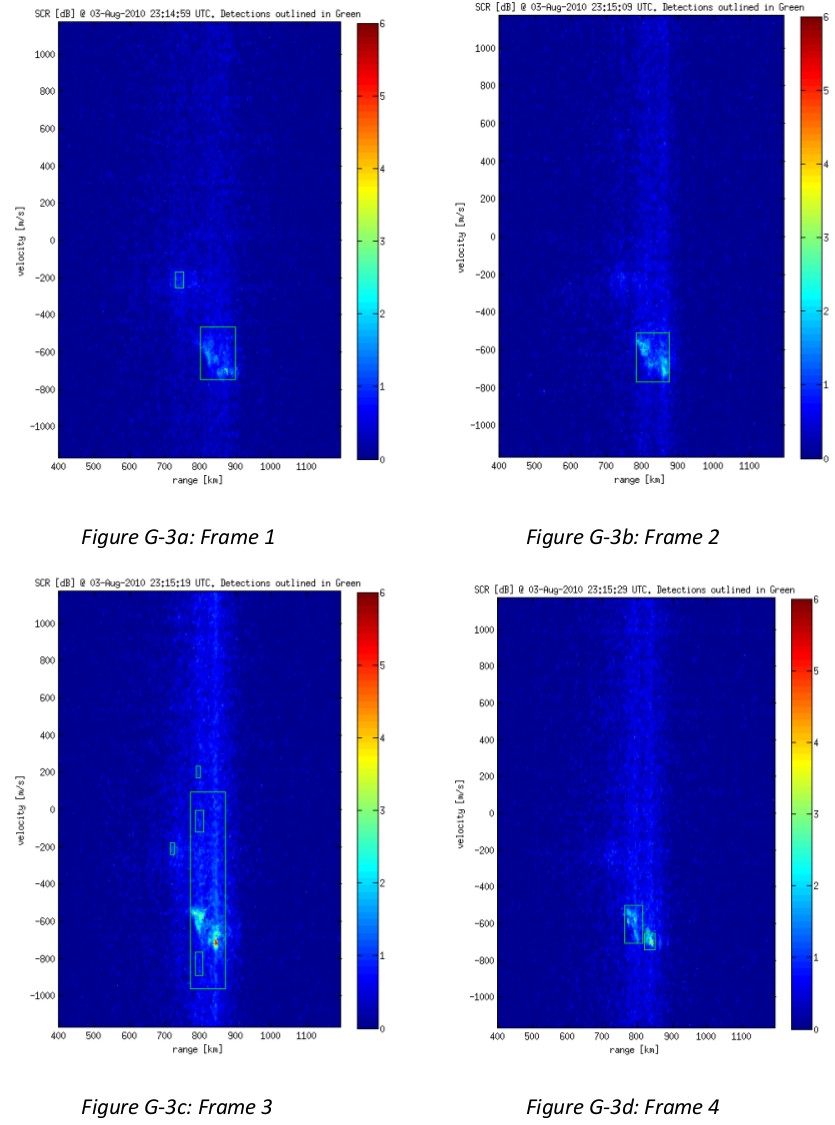Passive Hitchhiker Radar: Uses broadcast signals as transmitter
MIT Haystack and University of Washington researchers have developed and refined a series of instruments that harness existing broadcast FM and TV signals. Software defined radio and a sophisticated signal processing chain resolve turbulence in the ionosphere. Previous hobbyist efforts have also detected large, nearby hard targets such as airplanes, but detecting plasma turbulence 100+ km in altitude is a far more difficult task.

Map of passive hitchhiker radar stations in New England showing plausible ray paths.
Our contribution to this effort was automated computer vision algorithms detecting ionospheric disturbances, for ionospheric turbulence classification and characterization.
